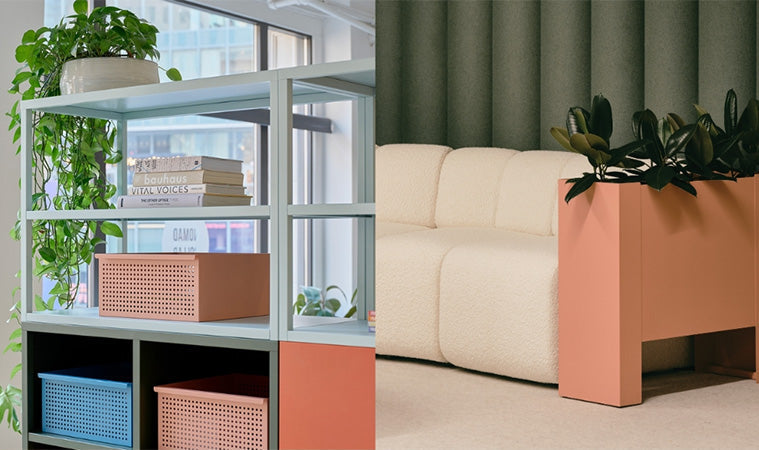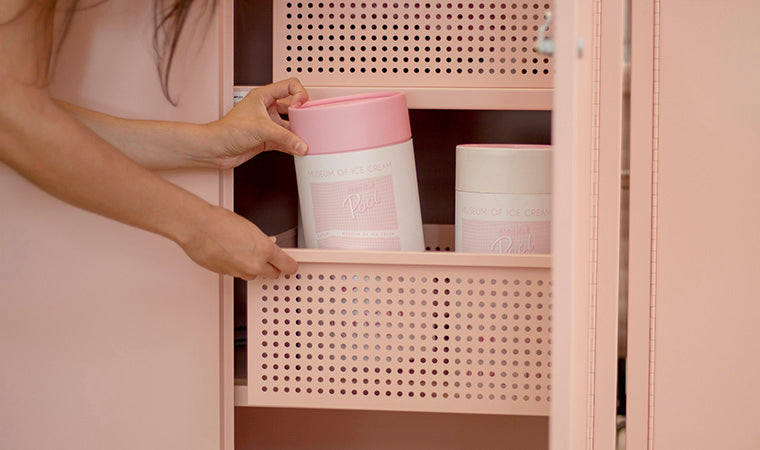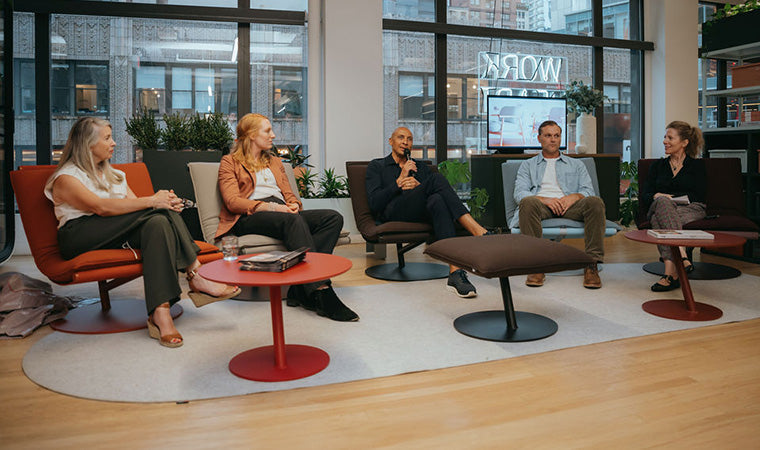LinkedIn embraces the mission of creating a digital map of the global economy to connect talent with opportunity at massive scale. The professional network and jobs engagement site has expanded their own workforce thoughtfully since its inception in 2003. Now, with offices all over the world, they are faced with the unique challenge of creating a global brand experience while allowing and encouraging the influence of locality and regionality in their designs.
When LinkedIn set out to redesign their waste management program, Heartwork was excited to work with their team on developing a scalable solution. Following the launch of the new recycling program at LinkedIn’s NYC and SF offices, we spoke with Cherish Rosas, a Global Design Manager Lead on the internal design team at LinkedIn for her insight on the role that company values play in design, setting sustainability standards and designing for experience.

What is LinkedIn’s local and global design philosophy?
In general terms, we always work under the umbrella of wanting any office we’re designing to feel uniquely LinkedIn. While we have global design principles, we work thoughtfully on incorporating local flair and regional vernacular to our projects. This allows us to promote our company culture while celebrating the local culture.
We spend significant time creating strategies that define experiences in a space. We think of it from the perspective of a member, visitor, candidate and employee coming to the office for the first time. On entry, we want to communicate a global brand impression. You’ll see LinkedIn blue, our logos, graphics, etc. As you go a bit further in the space as a member candidate or visitor, it’ll start feeling more regional. We’ll introduce graphics, artwork and furniture that has more of a local perception or style. The final stage is the experience of an employee - once you enter spaces that are strictly employee facing design is more interactive, humorous and fun.
We’re always working to support our cultural values. They influence every aspect of our business and decision making process.
Members first
Relationships matter
Be open, honest and constructive
Demand excellence
Take intelligent risks
Act like an owner
How does that translate to New York specifically?
We spent time internally and with our design partners to research the culture of NYC. It always starts with a large pile of information, like fun things to do, lesser known facts, history, architecture, the contagious energy of the city, and so on. We then funnel down to things that connect with our cultural values, and our people, and take it from there.
Our stack here ranges from references to SNL actors, different parks in the city, things you could discover in NYC… One of my favorites is that the conference rooms are named after things you don’t often hear about in NYC. Each room features an informational tool describing what the room represents, and how you can find it’s partnered fact. One conference room is called “Lamppost”, it has these amazing graphics of abstract interpretations on lampposts that represent the wayfinding system used in Central Park. If you don’t know about it - it’s worth a read. It has changed the way I experience Central Park.
How does the iconic Empire State Building location weigh into your design decisions?
Frankly, designing and building in a Landmark building, and the most iconic building in the city is a great challenge. As a good frame of reference, consider it took three years for us to design and renovate the third floor alone… and it took less than a year to build the entire building back in the 1930s. The red tape can be frustrating, but understandable considering the impact the building has on NYC.
Where it makes sense, we celebrate the Empire State Building prominently. We’ve exposed all of the columns in the space – helping to lend an industrial feel and opening up previously closed off work areas. This small detail helps to give context working in our spaces that this is an iconic and historic building that everyone in the world knows. Also, we have the best views of New York City in almost every direction.

Can you talk to us about LinkedIn’s sustainability efforts?
Generally, as a company we try to hit LEED Platinum standards wherever we are in the Americas. So, for New York, even though the building does not require LEED Platinum, we still incorporate these standards on principle. We have a sustainability team under our Global Workplace Services which oversees our global change programs. In New York, they have recently introduced composting, which is helping on our waste management system. We also interview our potential design partners and interiors partners about their sustainability goals to understand how they align with our commitments. As we continue to upgrade our facilities, biophilia is always a consideration as we work towards improving wellness.
One major push we made recently was the recycling program we worked with Heartwork on. It’s made a huge impact. Before switching to communal waste management, each individual employee had their own dustbin at their desk. With 900 employees, that was a lot of trash to manage. By switching to centralized recycling through Heartwork, we reduced that number drastically. We worked with our green team, who are LinkedIn employees interested in sustainability and promoting green practices, to host an educational event to facilitate the change over. So far it’s been well received with no complaints!
From a wellness standpoint, we are exploring programs and certifications to add to our process. We absolutely recognize the significance and role that wellness plays in design, so programs like Fitwel are interesting as we explore.

When tackling a solution focused design project, like a recycling program, how do you define your goals?
Our #1 goal was to be compliant with NYC law. We always want to raise our offices to the standard of our brand. We had already switched over in California and Chicago and we needed to catch up in New York. We wanted to keep things as seamless as possible for our employees. By having a change management program we were able to manage the transition – the education element really helped. We also provided digital maps to let people know where the closest locations were. We’re also rolling out this program in Omaha and Detroit.
What has the impact been for facilities?
For New York, the Empire State Custodial staff handles janitorial services for waste management for the building. In the past, they used to have to empty every single bin on seven floors every night, now they are able to more efficiently sweep the floors to change out the significantly fewer, easier to manage bins. We haven’t spoken to them directly, but imagine this does make an impact on their daily lives!

We love your use of color throughout your office. Can you talk a bit about how you think about color in the workspace at LinkedIn?
We try to get away from ‘LinkedIn Blue’ where we can, especially when there is an opportunity to use living items like plants to add color. In shared spaces the furniture can be a bit more muted, but we like to incorporate paint, graphics and even food choices to liven things up. In open and social spaces we can be more bold with a palette that inspires energy and keeps attention.
Globally we’re getting more ambitious about color. In tech companies, you’ll find that they always want to brand your colors heavily in your workspace design. We’re open and trying to go beyond the blue.
What’s next for LinkedIn?
We’re excited to open our latest redesign project, in Detroit, early in April. We’re also kicking off a new round of design and development for an expansion in NYC, it’s too early to share many details but we’re looking forward to continuing to level up the experience at LinkedIn.



For more information on our Active Duty Recycling Credenzas, click here!



